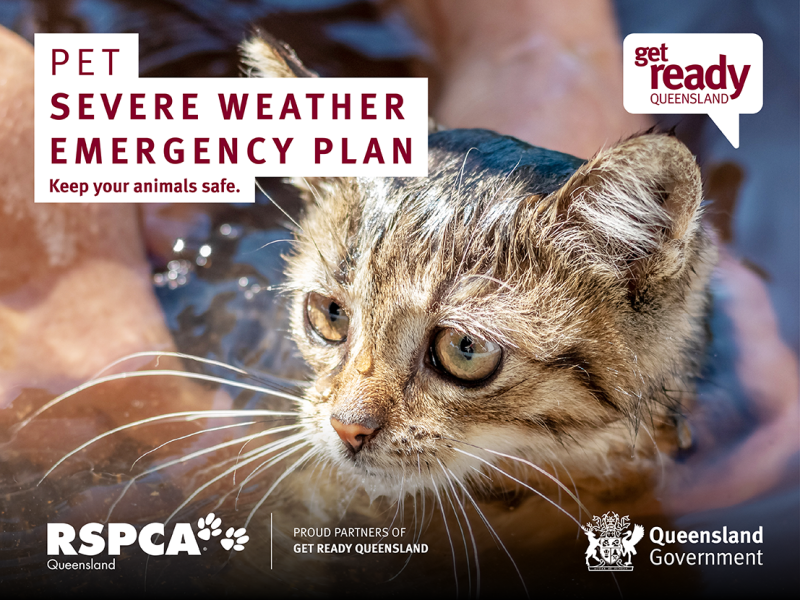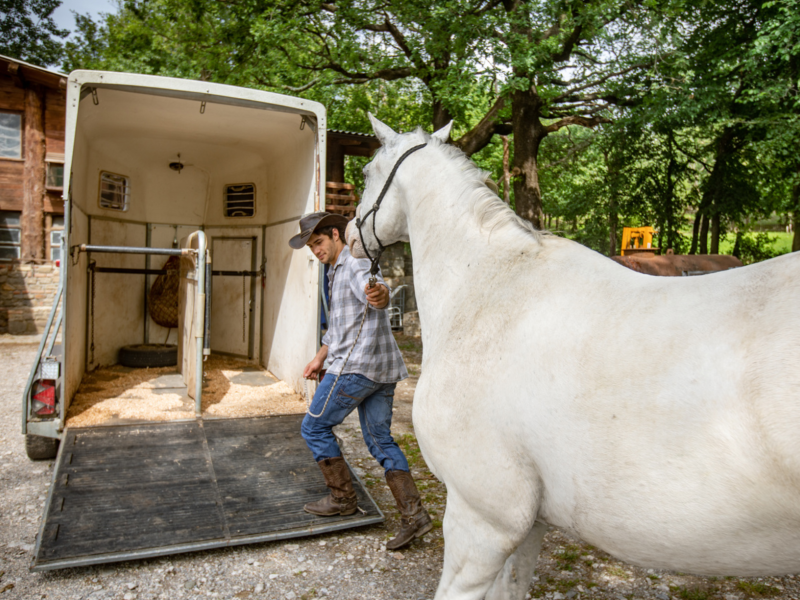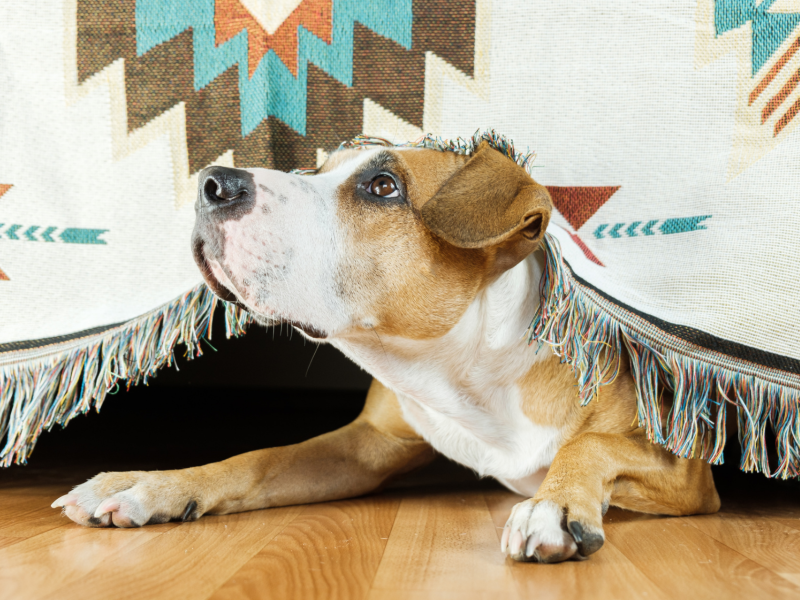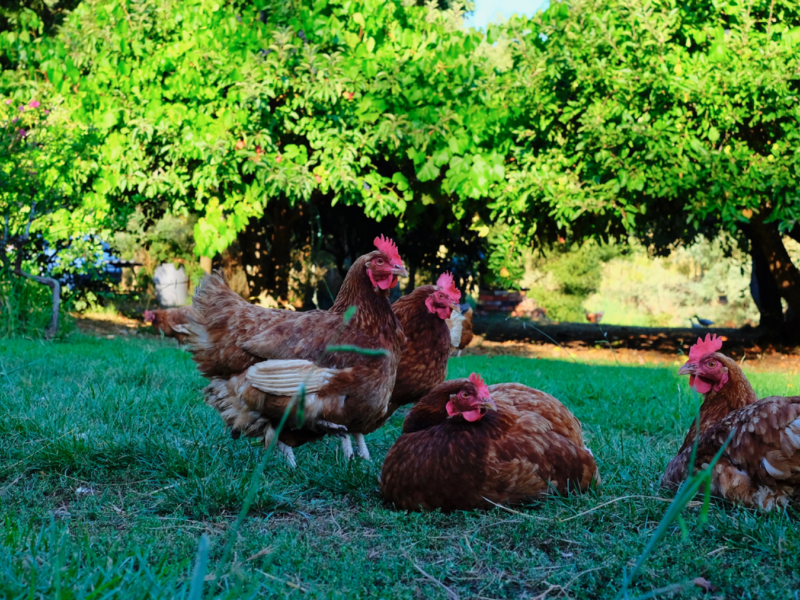In emergency situations, pets are often the most vulnerable members of the family
Think about what plans you can put in place now.
Who would care for your pets if you were unable to get home? What you would do with them if you had to evacuate?
Planning ahead before severe weather strikes will save you valuable time and could also save the life of your pets.
RSCPA's video below shows you why it's important to have a plan in place for your pet
Prepare your pet checklist
Get ready before the next disaster hits and pack a bag or box of necessities for your pet so you can act quickly during an emergency.
Hover over the interactive dots below or expand the checklist to find out what you need to include.
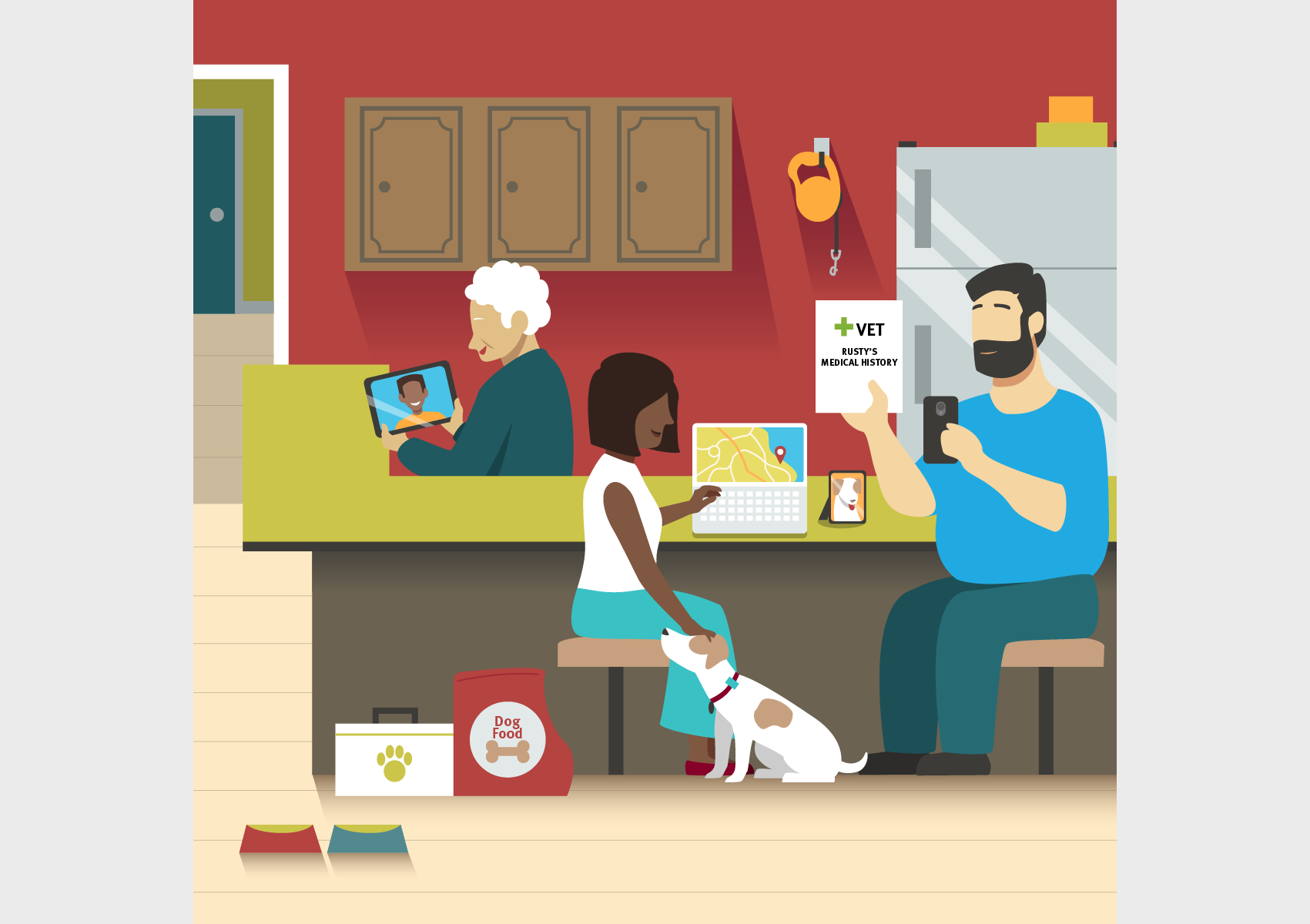
If evacuation is required during a disaster, taking your pet with you or relocating your pet to an alternative location is the best way to protect them. Make a plan for where you could take them, keeping in mind that pets may not be allowed in evacuation shelters unless they are a service animal. Check with family and friends who live outside your local area to see if they would be able to look after your pets if you needed to evacuate. If moving animals to a safer place, do so early to avoid unnecessary risk and ensure they have access to plenty of food and water.

Have contingencies or arrangements in place for transporting animals in emergencies. This extends to livestock where access to horse floats and trucks should be considered.

Ensure that you share your pet emergency plan with nearby friends or neighbours so they can implement the plan in your absence.

Have your pet microchipped and registered with your local council. Have them wear a collar with up-to-date contact information and identification at all times.
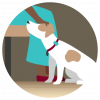
Have a pet emergency kit ready to go to save you time during emergencies.

If you have to leave your pets behind, ideally leave them indoors in separate rooms with small or preferably no windows (e.g. a bathroom or laundry) and provide adequate food and water in large heavy bowls. If left outside do not tie them up. When you have to wait out a severe weather event at home, identify a safe area where you can all stay together (e.g. bathroom or laundry) and secure animals so they don’t take flight.

Talk to your vet about any special considerations for your pet.

If evacuation is required during a disaster, taking your pet with you or relocating your pet to an alternative location is the best way to protect them. Make a plan for where you could take them, keeping in mind that pets may not be allowed in evacuation shelters unless they are a service animal. Check with family and friends who live outside your local area to see if they would be able to look after your pets if you needed to evacuate. If moving animals to a safer place, do so early to avoid unnecessary risk and ensure they have access to plenty of food and water.

Have contingencies or arrangements in place for transporting animals in emergencies. This extends to livestock where access to horse floats and trucks should be considered.

Ensure that you share your pet emergency plan with nearby friends or neighbours so they can implement the plan in your absence.

Have your pet microchipped and registered with your local council. Have them wear a collar with up-to-date contact information and identification at all times.

Have a pet emergency kit ready to go to save you time during emergencies.

If you have to leave your pets behind, ideally leave them indoors in separate rooms with small or preferably no windows (e.g. a bathroom or laundry) and provide adequate food and water in large heavy bowls. If left outside do not tie them up. When you have to wait out a severe weather event at home, identify a safe area where you can all stay together (e.g. bathroom or laundry) and secure animals so they don’t take flight.

Talk to your vet about any special considerations for your pet.

If evacuation is required during a disaster, taking your pet with you or relocating your pet to an alternative location is the best way to protect them. Make a plan for where you could take them, keeping in mind that pets may not be allowed in evacuation shelters unless they are a service animal. Check with family and friends who live outside your local area to see if they would be able to look after your pets if you needed to evacuate. If moving animals to a safer place, do so early to avoid unnecessary risk and ensure they have access to plenty of food and water.

Have contingencies or arrangements in place for transporting animals in emergencies. This extends to livestock where access to horse floats and trucks should be considered.

Ensure that you share your pet emergency plan with nearby friends or neighbours so they can implement the plan in your absence.

Have your pet microchipped and registered with your local council. Have them wear a collar with up-to-date contact information and identification at all times.

Have a pet emergency kit ready to go to save you time during emergencies.

If you have to leave your pets behind, ideally leave them indoors in separate rooms with small or preferably no windows (e.g. a bathroom or laundry) and provide adequate food and water in large heavy bowls. If left outside do not tie them up. When you have to wait out a severe weather event at home, identify a safe area where you can all stay together (e.g. bathroom or laundry) and secure animals so they don’t take flight.

Talk to your vet about any special considerations for your pet.

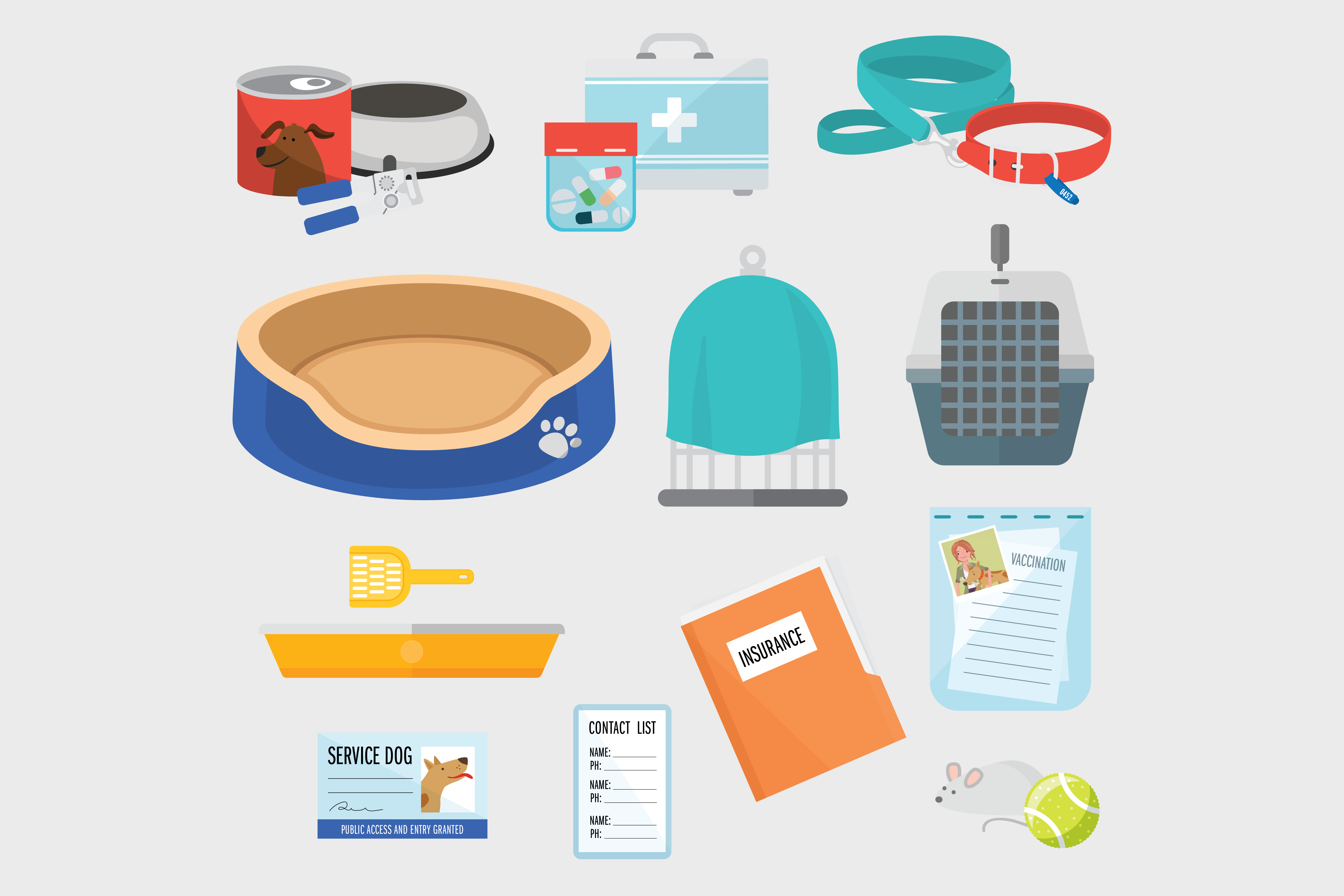
Food and bottled water for at least five days. Including feeding bowls and a can opener.

Medicines with clear instructions, medical records and first aid.

Collar with ID tag and leash.

Blankets, bedding or nesting materials.

Birds and pocket pets need shelter coverage for their enclosure.

Have carry boxes (for smaller pets), leads (for dogs) and halters (for livestock) readily accessible.

Litter tray, litter, waste bags and cleaning products.
Consider whether pet insurance is right for you and have relevant paperwork in your emergency kit.

Vaccination and registration documentation plus current photos of you and your pet in a waterproof bag.

Evidence that your pet is a service animal and appropriately trained to access public areas.

Contact details for your veterinarian, local animal shelter, local council and alternative animal accommodation facility.

Favourite toys that bring comfort.

Food and bottled water for at least five days. Including feeding bowls and a can opener.

Medicines with clear instructions, medical records and first aid.

Collar with ID tag and leash.

Blankets, bedding or nesting materials.

Birds and pocket pets need shelter coverage for their enclosure.

Have carry boxes (for smaller pets), leads (for dogs) and halters (for livestock) readily accessible.

Litter tray, litter, waste bags and cleaning products.
Consider whether pet insurance is right for you and have relevant paperwork in your emergency kit.

Vaccination and registration documentation plus current photos of you and your pet in a waterproof bag.

Evidence that your pet is a service animal and appropriately trained to access public areas.

Contact details for your veterinarian, local animal shelter, local council and alternative animal accommodation facility.

Favourite toys that bring comfort.

Food and bottled water for at least five days. Including feeding bowls and a can opener.

Medicines with clear instructions, medical records and first aid.

Collar with ID tag and leash.

Blankets, bedding or nesting materials.

Birds and pocket pets need shelter coverage for their enclosure.

Have carry boxes (for smaller pets), leads (for dogs) and halters (for livestock) readily accessible.

Litter tray, litter, waste bags and cleaning products.
Consider whether pet insurance is right for you and have relevant paperwork in your emergency kit.

Vaccination and registration documentation plus current photos of you and your pet in a waterproof bag.

Evidence that your pet is a service animal and appropriately trained to access public areas.

Contact details for your veterinarian, local animal shelter, local council and alternative animal accommodation facility.

Favourite toys that bring comfort.

More tips from RSPCA Queensland
RSPCA Queensland provides helpful advice to some issues that your pets may face during and after Queensland's most common natural disasters.
